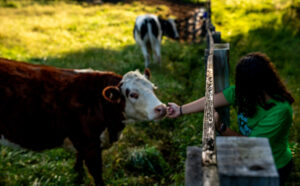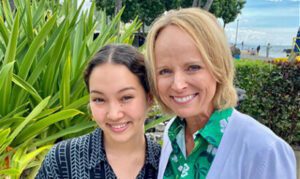Report includes insights from the 4-H Healthy Habits program; a youth-focused healthy living program supported by the Walmart Foundation.
Chevy Chase, MD (March 26, 2019) – National 4-H Council, in partnership with the University of Arizona, announces the release of a special report highlighting key learnings of youth-focused healthy living programming through its 4-H Healthy Habits program. Administered by land-grant universities across the country, and funded through grants from the Walmart Foundation, 4-H Healthy Habits offers promising practices to build inclusive environments for a diverse array of youth, their families and communities.
Since 2012, 4-H and the Walmart Foundation have partnered to reach a million youth with nutrition education and physical activity, with an intentional focus on populations who face challenges in achieving positive health outcomes. The Walmart Foundation has renewed its commitment to youth healthy living programming in 2018-2019 by awarding a grant to National 4-H Council for $2,999,350 million to reach 200,000 youth and families with 4-H Healthy Habits programming.
According to Eileen Hyde, Program Manager for the Walmart Foundation, “Walmart and the Walmart Foundation committed to help provide nutrition education to 4 million people by 2020. We recently announced that we have put funding in place to reach this commitment ahead of schedule, and as part of that work, we’re excited to support the 4-H Healthy Habits program. This program enables youth to create a deeper understanding of healthy habits among a diverse population of peers, as well as in their families and communities.”
The special report synthesizes multiple data points and thoughtful feedback from educators, volunteers and youth to help 4-H and peers in positive youth development most effectively impact hard to reach populations, including youth of color and rural youth.
“We are so glad to see from this research that a diverse body of teens across the country are inspiring engagement of their peers, families and communities in the 4-H Healthy Habits program,” said Jennifer Sirangelo, President and CEO, National 4-H Council. “4-H is committed to ensuring all youth feel welcomed and engaged in their club, community, country and the world.”
Best practices found to increase diverse audiences align with the areas of Teen Leadership, Learning Activities and Community Partnerships. Below are a few key findings from the study.
Teen Leadership
- Involve diverse teen teachers to lead the program and engage homeschoolers to lead programming during the day when school is in session.
- Eliminating or waiving participation fees for teen leaders who may also come from families experiencing extreme financial hardship.
- Remember transportation can be a limitation for youth, particularly in rural areas, so consider providing transit fare for teens who do not have vehicle access or budgeting for transport of larger groups to avoid transportation challenges (e.g., fuel money if 4-H has access to vehicles, or rental of vans).
Learning Activities
- Host family-centered events where youth and their families learn about and participate in physical activity and healthy eating together; these events can add to cultural relativity.
- Be innovative in approaches to engage families and the larger community through hosting or appearing at community-based events where a broader audience is accessible, or during times when parents typically pickup children at school.
- Lead hands-on activities like gardening or games in areas where language barriers might make seat-learning more difficult.
Community Partnerships
- Increase reach among youth of color by collaborating with partners in K-12 schools, other 4-H programs, afterschool programs, summer camps, other Extension programs and participants’ families.
- Seek ways to leverage systems-level or proximity-based conveniences to minimize burdens around scheduling and transportation, which can be particularly advantageous in rural areas, given the heightened transportation challenges.
Health is not only one of the four H’s, but it is also a key programmatic pillar for 4-H, as health in youth leads to better long-term outcomes in the future. Today, as 4-H affirms its commitment to equity, this study provides insights to inform best practices that can benefit those within and outside the Cooperative Extension System.
To view the white paper in its entirety, please visit www.4-h.org/about/research/#!healthy-living.

By using our strengths to help others, Walmart and the Walmart Foundation create opportunities for people to live better every day. Walmart has stores in 27 countries, employing more than 2.2 million associates and doing business with thousands of suppliers who, in turn, employ millions of people. Our philanthropy helps people live better by supporting upward job mobility and economic development for the retail workforce; addressing hunger and making healthier, more sustainably-grown food a reality; and building strong communities where Walmart operates and inspiring our associates to give back.
To learn more about Walmart’s giving, visit http://giving.walmart.com/foundation.
4-H, the nation’s largest youth development organization, grows confident young people who are empowered for life today and prepared for career tomorrow. 4-H programs empower nearly 6 million young people across the U.S. through experiences that develop critical life skills. 4-H is the youth development program of our nation’s Cooperative Extension System and USDA, and serves every county and parish in the U.S. through a network of 110 public universities and more than 3000 local Extension offices. The research-backed 4-H experience grows young people who are four times more likely to contribute to their communities; two times more likely to make healthier choices; two times more likely to be civically active; and two times more likely to participate in STEM programs.
Learn more about 4-H at www.4-h.org, find us on Facebook at www.facebook.com/4h and follow us on Twitter at www.twitter.com/4h.
















